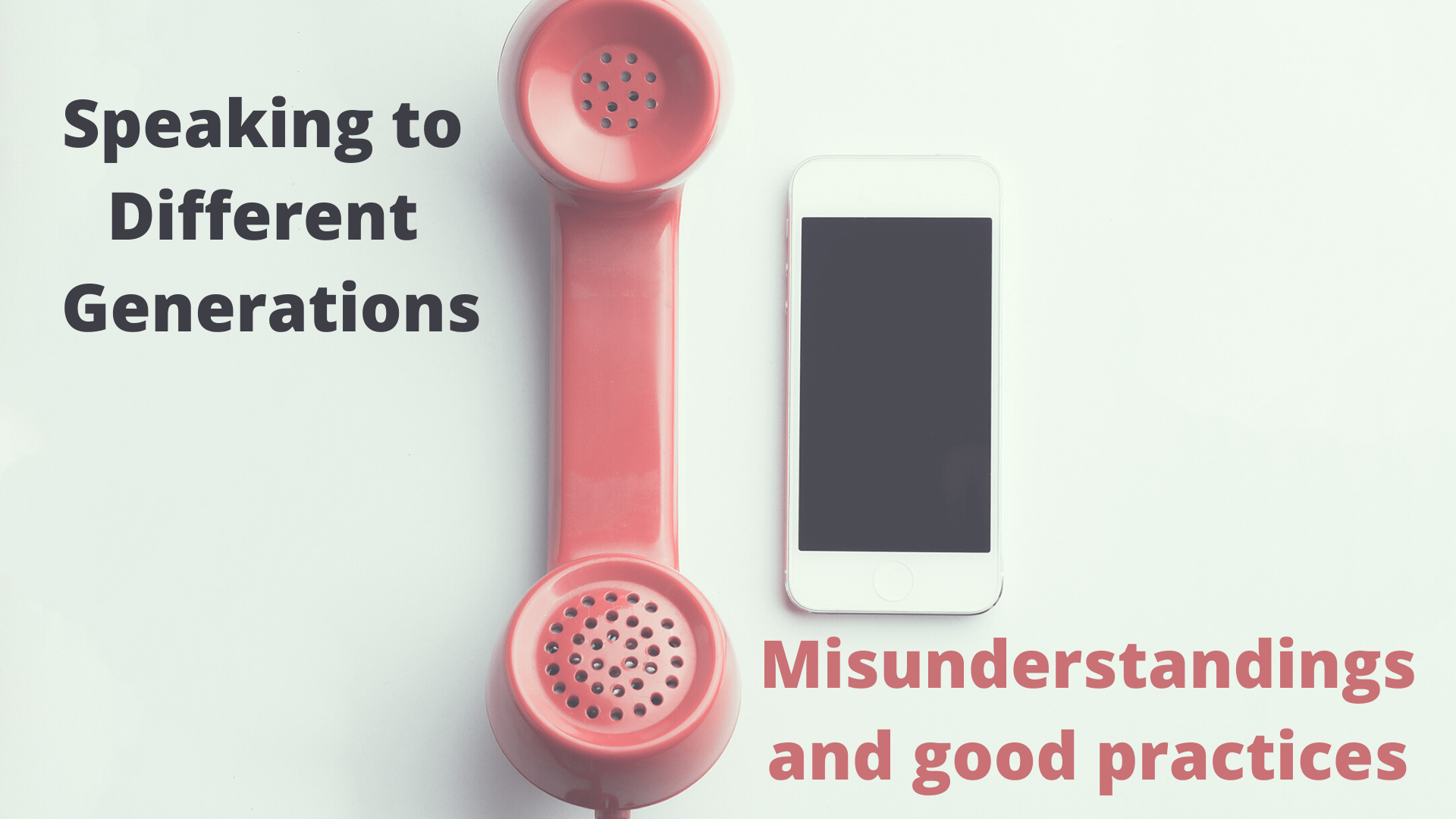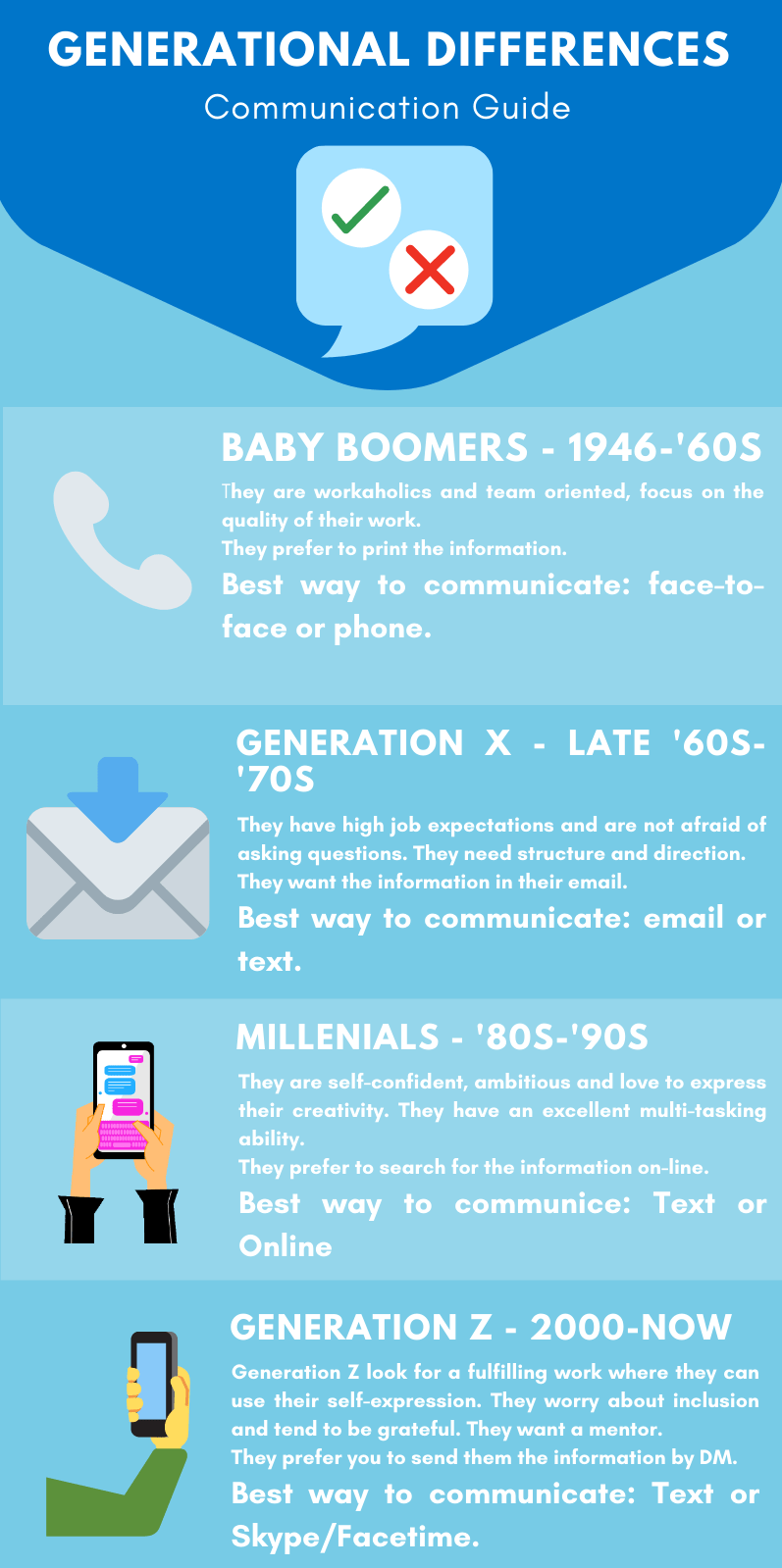Your cart is currently empty!

Speaking to Different Generations – good practices
Communication between two different generations can be a challenge. Every generation had their own experiences and ways of living – it impacted the way they communicate.
Yet, whether because you work in an age-diverse office or because you have to give a presentation to an audience with a significant age difference from you, it is vital to know how to reach them.

Communication Between Generations – A guide
Knowing more about each generation and seeking a greater understanding of its challenges can improve your company’s communication or your presentation’s success.
Face to Face is Vital
While no one denies the importance of technology in work efficiency, never forget that face to face conversation is vital for people to understand each other. The immediate feedback allows you to explain your message if the meaning is not received as you would like to.
In face to face interaction, you have the support of body language to facilitate communication. Written information lacks that personal touch and can lead to misinterpretations.
Different generations can interpret the same information differently – a piece of written text doesn’t tell it all. Different uses of punctuation or emojis are the most shocking cases of how the written information can lead to misunderstandings and sometimes conflicts.
One of the greatest difficulties is to interpret the tone. Have you ever open an email and asked yourself, “Is he serious? Or being sarcastic?” Trying to add a bit of humor is significantly more difficult. You can try to add an emoji to help, but they are often interpreted differently by each reader. Besides, boomers may frown – they can feel the use of emojis is unprofessional.
There is no better way to effective communication than the old face-to-face talk with plenty of eye contact.
Catching Attention
If you give a 20 pages report to a Boomer to read, they will probably be OK with it, as long as you give them enough time to do it. Millennials, on the other hand, will probably frown, and you’ll never reach Generation Z this way. They need something more visual.
In a presentation context, forget the slides with bullet points and complicated charts. Short clips and videos that could entertain and educate will be more effective with a younger audience. Also, there is no downside to boomers, unless the clips are “too funny” or something else that could be considered unprofessional.
Time is valued differently
The way people value and organize their time also has an impact on the way they communicate. For effective communication, it is important to keep in mind how each generation looks at different communication means.
Younger generations always have their smartphones in hand, answering texts and emails as they arrive. A phone call is seen as a sign of urgency, generating anxiety.
Older generations, however, usually block some time of their day to answer emails, so they are not constantly available for immediate communication in that form. For them, a phone call is just an easy and simple way to communicate, and it has nothing to do with urgency.
Share, explain, and manage expectations
Assume nothing. The main reason communication fails is that we think we know what other people mean. We don’t. If it was not clear, ask. There is no problem is saying, “I don’t understand.” or “What does that mean?”
Don’t avoid conversations that might be uncomfortable. That’s a big mistake. Practice active listening and try to be empathetic for people that think and act differently. Always be as clear as possible in your messages and look for assurance that the other person understood what you meant.
Don’t avoid new things
If you are a boomer, you may feel overwhelmed by the number of things you need to learn how to use. Many of us become a little defensive in such situations. Keep an open mind and try that new social network or communication platform. Don’t fear asking for help. Most millennials will love to help; it makes them feel good.
If you’re a younger person who is an ace at all current tech, that’s great! Yet, let me tell you: sometimes, you may have to use that old tech you don’t like. Don’t be shy. Go to your older colleagues and ask how it works; try it out. Using an old fax machine can be a quite fun experience. Besides, there will be a time where new generations will call your technology obsolete, so try to upgrade your communication style from time to time and keep up with the news.
Intergenerational communication
No matter which generation you belong to, we all want the same: to be understood and respected. Making an effort to understand others and explaining your own perspective is vital to a healthy work environment and good communication.
Don’t be afraid of asking questions and always explain yourself better if there is a chance for misunderstandings. Be sensitive to other limitations and avoid judgmental comments.
With all the sudden changes and fast technological development in the modern world, generational differences can be a bigger obstacle than the language itself.
Cátia is a psychologist who is passionate about helping children develop and train social skills.


Leave a Reply